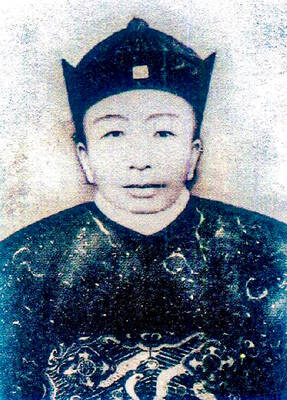From the top of the Prince of the Sky’s tower, the pavement below is a vertigo-inducing abstraction, a gray expanse dotted with people-like specks. But the Prince, one of the best tightrope walkers in the world, doesn’t think about the pavement. He looks towards his destination — another high tower on a distant hillside — and contemplates the thin steel cable strung across the expanse.
For Aisikaier Wubulikaisimu, 41, tightrope walking is more than a circus act — it’s a national sport with two millennia of history.
Aisikaier, hailed as the Prince by his publicist, is Uighur, a predominantly Muslim ethnic group from Xinjiang Province in China’s far northwest. He has wide-set eyes, a burst of knotty dreadlocks and a gnarled scar just below his jaw, from when he fell from a low wire as a child and impaled himself on the protruding end of a metal coil. In his native language, tightrope walking is called dawaz, and like all dawaz performers, he refuses to use safety equipment. Every walk is a dance with fate.

Photo: Reuters
“I represent the people of Xinjiang,” Aisikaier says in stilted Mandarin. “If I fail, people will think I’m a joke. So I don’t think about failure. Either I succeed, or I die.”
He laughs. Suddenly, Xinjiang music blares from the speakers below — a sweep of hand-drums, fiddles and lutes — and he steps on to the wire.
‘Weapon of the weak’
Aisikaier is, by most metrics, a success. He works for a small theme park in rural southwest China, which pays him well. He has broken four Guinness world records, most of them for speed-mad 100m dashes across dizzyingly high wires, and frequently appears on Chinese television.
Yet for Aisikaier and other Uighurs, navigating Chinese society is itself a tightrope act, fraught with an equal degree of peril. They are China’s most beleaguered ethnic group — feared, misunderstood and economically marginalized. Cozy up to Han society and they could be ostracized. Struggle against it and they could be jailed.
“I think [dawaz] is a nice metaphor for the sort of place that Uighurs find themselves in, between Chinese society and central Asian society, between Islam and Chinese secularism,” says Dru Gladney, an expert on China’s ethnic minorities at Pomona College in California.
While the Chinese government supports traditional Uighur music and dance, staging elaborate shows to showcase the country’s ethnic diversity, it barely touches dawaz. The sport is too rugged, too individualistic.
“You can say it’s a weapon of the weak, but it’s also a very effective way of showing the resilience of Uighur culture,” he says.
Every month seems to bring news from Xinjiang underscoring the region’s entrenched ethnic divide. In November last year, 11 people died when a Uighur mob attacked a police station. On Dec. 15, a clash between gun-toting police and machete-wielding Uighurs took 16 lives in the region’s arid west. The unrest reached Beijing in October, when an SUV ploughed through pedestrians in Tiananmen Square and caught fire, killing five and injuring dozens. Authorities identified the driver as Uighur and described the incident as an act of terrorism, motivated by “religious extremist forces.” Uighur activists abroad called it a last-ditch protest against religious and cultural constraints.
Tensions in Xinjiang reached boiling point in July 2009, when knife-wielding Uighurs rioted in the region’s capital, Urumqi, indiscriminately killing scores of Han Chinese. Since then, authorities in Xinjiang have kept up a relentless campaign of surveillance cameras, Internet monitors and paramilitary troops. They pressure women to remove their veils, discourage fasting during Ramadan and prohibit young Uighur men from visiting mosques, fearing they will organize protests. Han and Uighurs frequent different restaurants and nightclubs. Intermarriage is rare.
The tradition of dawaz is rooted in resistance. Thousands of years ago, performers say, a Xinjiang city was invaded by repressive ghosts. Uighur warriors could not push past its high wall and moat, so for a long time, the ghosts ruled unabated. But one brave warrior fixed a rope between a tree and the city wall and walked across, using two heavy swords to keep his balance. Ultimately, he scaled the wall, vanquished the ghosts and liberated his people.
‘An activist on some level’
Although Adili Wuxor has never vanquished any ghosts, his rise to national stardom has, for many Uighurs, comparable significance.
Adili, 43, is Aisikaier’s friend and only rival, a sixth-generation tightrope walker whose ancestors performed for Qing dynasty emperors. He is a darling of the state-owned media. In 2010, Adili performed on a wire strung over the Bird’s Nest Stadium for 60 consecutive days, sleeping in a tiny cabin on its roof. Last year in October, he walked between two guard towers on the Great Wall.
“I’m of the sky. That’s what I do,” he told the China Daily. “And the Great Wall is a place particularly symbolic.”
Despite his boyish visage and compact frame, Adili has the air of a triumphant underdog. “If I never studied dawaz, it’s very possible that dawaz would cease to exist,” he says.
Adili began practicing dawaz at the age of five and spent so much time on the wire as a child that it left permanent grooves in the soles of his feet. He recently opened a dawaz school for orphans in Xinjiang, and says he directs half of his 6 million yuan (NT$29.8 million) annual income toward keeping it afloat.
“Fewer and fewer people are studying dawaz,” he says. “You know China has a one-child policy, and if you only have one child, you’re not going to let her study something so dangerous.”
Despite his status among Uighurs, Adili enjoys a friendly relationship with the Chinese state.
His school’s promotional materials show students draped in a Chinese flag. He was a torchbearer for the 2008 Beijing Olympics and has repeatedly served as a deputy to the National People’s Congress, the national legislature. In 2004, Adili was touring in Toronto with an acrobatics troupe when seven members went into hiding and applied for political asylum.
Adili returned to Xinjiang with the remaining five. Xinjiang’s Communist party bosses claimed the defectors had been tricked by “overseas separatists” and Adili publicly appealed for their return.
“He walked this weird line between knowing that he was a symbol of nationhood on one level, and even of independence, I guess — but at the same time, he was very comfortable in this coddled position as a performer,” said Deborah Stratman, a Chicago-based documentary film-maker who lived with Adili as he toured Xinjiang for three months in 2001.
“It could have been that he was an activist on some level, but he would never reveal that, especially to a foreigner,” she said.
Aisikaier’s theme park is tucked away among lush, low-ying mountains an hour’s drive from Kunming, the capital of southwest China’s Yunnan Province. He says he couldn’t find suitable work in his childhood home of Kashgar. It’s a sensitive subject. When pushed for details, his eyes dart away, and he picks at his fingernails.
Aisikaier’s life at the park is placid. The park’s main attraction is the Kingdom of the Little People, staffed almost exclusively by people with dwarfism. They put on two variety shows a day for tourists. Aisikaier towers above his colleagues, many of whom he considers close friends; they spend most of their time chatting and playing cards. He lives in a mildewed dorm room and cooks halal food for himself. He plans to stay for another decade.
Occasionally, Aisikaier puts on elaborate performances organized by an agency in Anhui.
Last summer, his team strung a 700-meter-long cable between cliffs in central China and the Prince, seeking a new challenge, decided to cross it backwards and blindfolded. On the day, he wore a white tank top and pants. Although he had completed the walk in practice, that day was insufferably hot — 40oC — and after about 50 minutes, he began to feel queasy. His balancing pole swayed uncontrollably, nearly tapping the sides of his feet. With 40 meters to go, his legs gave out; he desperately tried to grab the wire, missed and plummeted.
When Aisikaier came to a few seconds later, he was tangled in the branches of a tree.“When I was falling, my mind was blank. But once I realized what had just happened, I thought: ‘I don’t want to die. God, don’t take me now. Give me another chance,’” he says.
Aisikaier went home that night shaken, but unhurt. Four days later, he was back on a wire.

The canonical shot of an East Asian city is a night skyline studded with towering apartment and office buildings, bright with neon and plastic signage, a landscape of energy and modernity. Another classic image is the same city seen from above, in which identical apartment towers march across the city, spilling out over nearby geography, like stylized soldiers colonizing new territory in a board game. Densely populated dynamic conurbations of money, technological innovation and convenience, it is hard to see the cities of East Asia as what they truly are: necropolises. Why is this? The East Asian development model, with

June 16 to June 22 The following flyer appeared on the streets of Hsinchu on June 12, 1895: “Taipei has already fallen to the Japanese barbarians, who have brought great misery to our land and people. We heard that the Japanese occupiers will tax our gardens, our houses, our bodies, and even our chickens, dogs, cows and pigs. They wear their hair wild, carve their teeth, tattoo their foreheads, wear strange clothes and speak a strange language. How can we be ruled by such people?” Posted by civilian militia leader Wu Tang-hsing (吳湯興), it was a call to arms to retake

This is a deeply unsettling period in Taiwan. Uncertainties are everywhere while everyone waits for a small army of other shoes to drop on nearly every front. During challenging times, interesting political changes can happen, yet all three major political parties are beset with scandals, strife and self-inflicted wounds. As the ruling party, the Democratic Progressive Party (DPP) is held accountable for not only the challenges to the party, but also the nation. Taiwan is geopolitically and economically under threat. Domestically, the administration is under siege by the opposition-controlled legislature and growing discontent with what opponents characterize as arrogant, autocratic

When Lisa, 20, laces into her ultra-high heels for her shift at a strip club in Ukraine’s Kharkiv, she knows that aside from dancing, she will have to comfort traumatized soldiers. Since Russia’s 2022 invasion, exhausted troops are the main clientele of the Flash Dancers club in the center of the northeastern city, just 20 kilometers from Russian forces. For some customers, it provides an “escape” from the war, said Valerya Zavatska — a 25-year-old law graduate who runs the club with her mother, an ex-dancer. But many are not there just for the show. They “want to talk about what hurts,” she